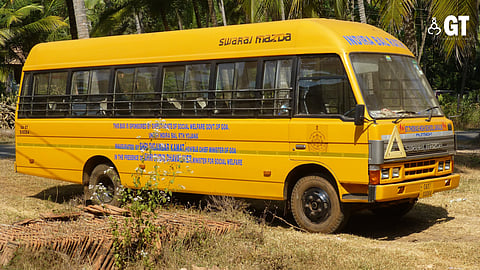

Fr Carlos Luis SAC
Since 2008, with the Directorate of Social Welfare’s introduction of the scheme to provide buses to institutes where the SC/ST student enrolment is high, we have been contesting and testing this idea of the Bal Rath school bus scheme to assist our village children to and from school. The Directorate of Education took up the scheme, merging three other schemes: Indira, Suvarna and Gomant Bal Rath, and promised that they would spend more money on school buses to benefit the children on a larger scale.
But the letter by State Commissioner for Protection of Child Rights Peter Borges to the Director of Transport Rajan Satardekar reveals that there are 60 buses out of the 419 Bal Rath buses that are plying on the road without fitness certificates, and this clearly states that something is amiss.
The Bal Rath school buses are meant to transport children safely and securely, but if they are not maintained, they will clearly not meet the purpose they are meant to serve. Apart from dropping students off at school and back home, the buses were to be utilised for educational excursions to the Goa State Museum, Kala Academy, various forts in Goa, the Goa Science Centre, etc.
The Bal Rath scheme has faced its share of troubles as every year it proves to be a costly affair, owing to the constant hunt for drivers and conductors, the fuel cost, bus maintenance, salaries of the drivers and helpers, etc. When the drivers are not paid their salary on time, the repercussion is negligence in the operation and maintenance of the vehicle. This in turn creates a situation that can pose a danger to the children.
The grant for the Bal Rath school bus scheme is given to both government and government-aided schools. But every year, with the increase in the number of students and rising costs, the grant becomes more and more insufficient. Given that this year Goa is trying to implement the National Educational Policy 2019, the introduction of new Bal Rath buses should go up.
The entry and exit option of NEP 2019 will drive up the enrolment of students from rural areas in schools. The NEP 2019 also emphasises a multidisciplinary approach, which means students will not only receive instruction in the classroom but will also be taken for visits to different industries and organisations to give them a hands-on experience.
With regard to Bal Rath school buses, therefore, we need to take a responsible way forward, as we are dealing with the lives of the future of our state and country. Bal Rath school buses allow easy tracking of children for parents. The parents can be assured that their children will safely reach their school on time and regularly attend classes.
Economically, the transport system becomes a viable solution for parents who would otherwise have to manage the transportation of their children. It likewise reduces the traffic on road and equally reduces pollution.
The recent kidnapping scare in the state has made Bal Rath school buses more essential to ensure that the children reach their homes safely. And so, it is the responsibility of the concerned management of schools to look into compliance with safety measures, apart from taking various other measures to secure the lives of students at school and provide them with a conducive study environment.
(The writer is a priest belonging to the Society of the Catholic Apostolate (Pallottine) and currently the Mission Secretary of the ABVM Province, Bangalore. He comments on literature and films that mirror life)